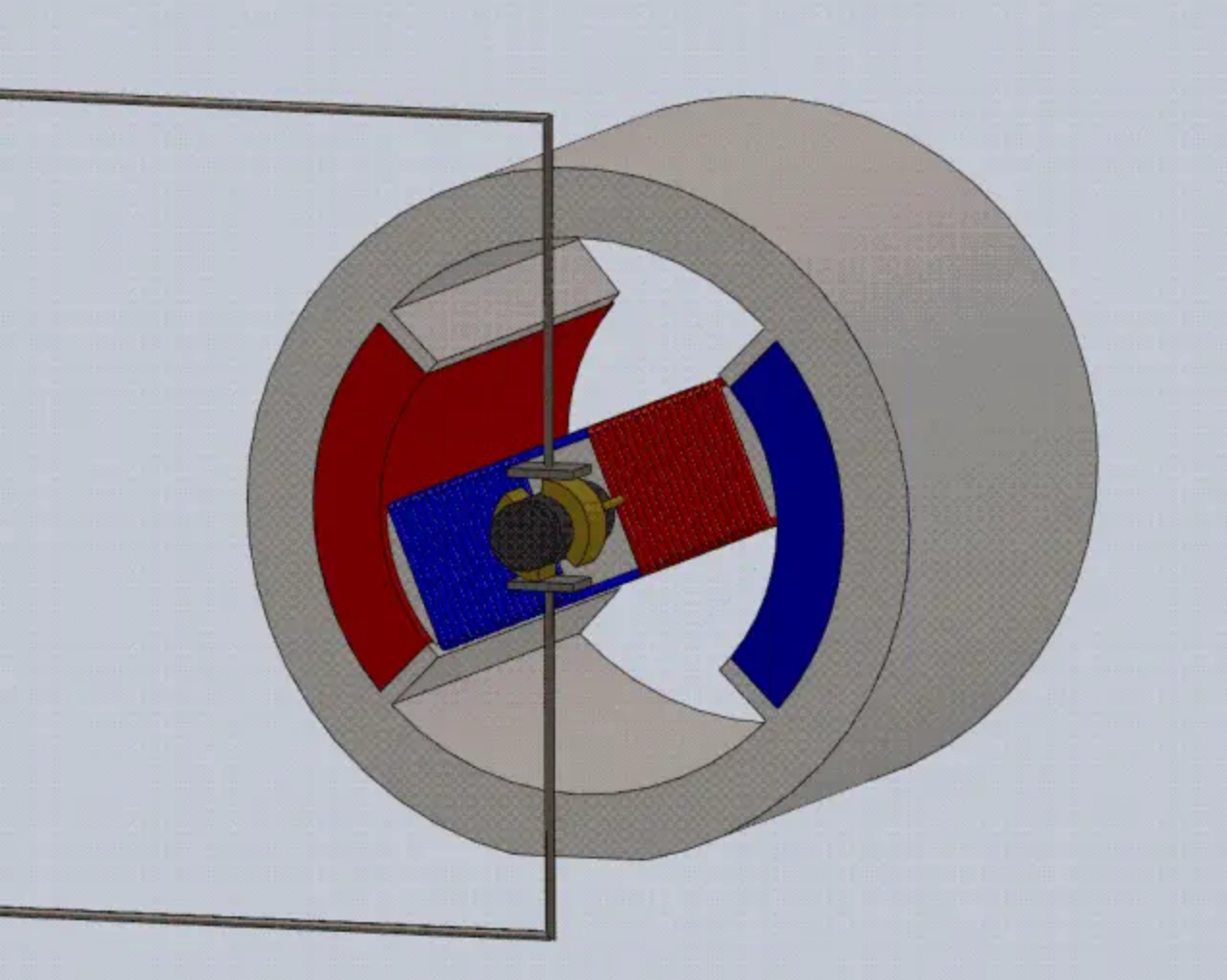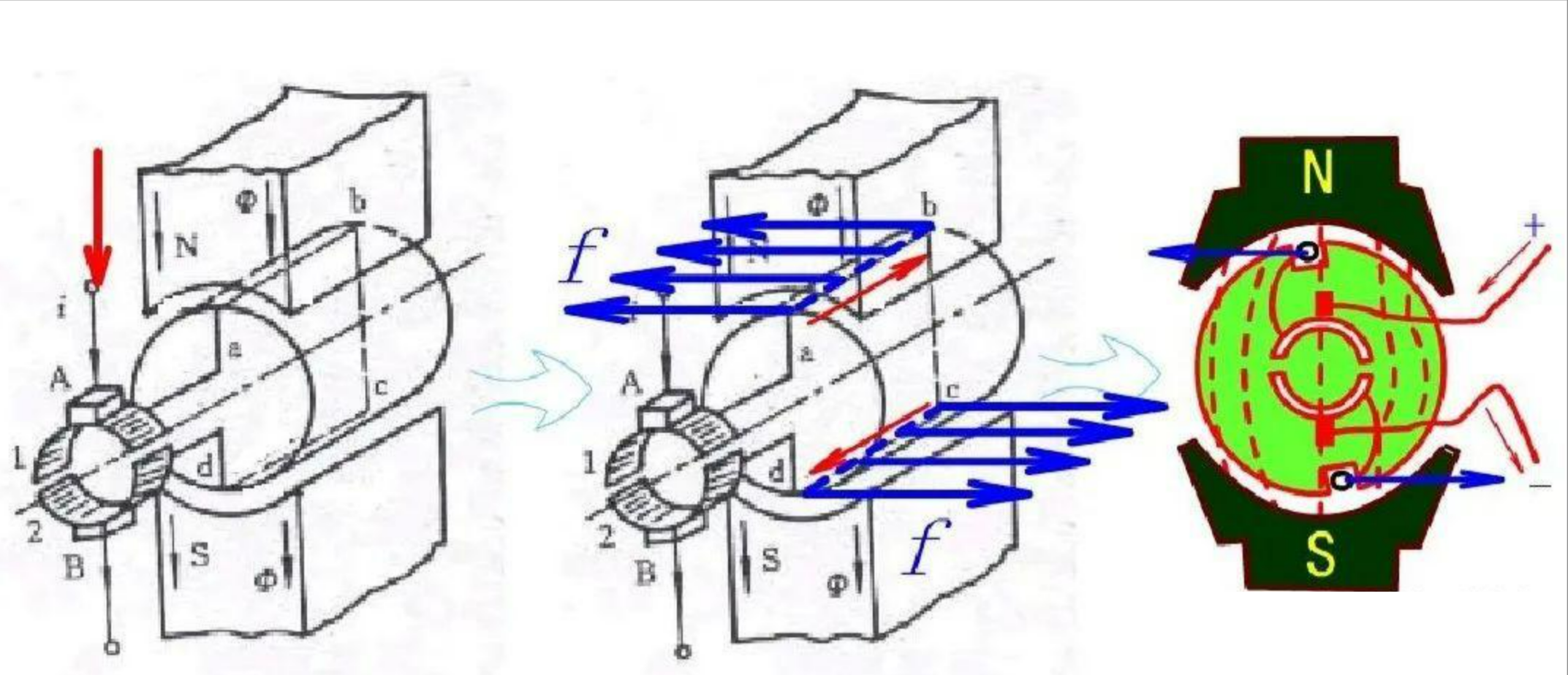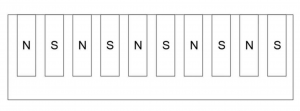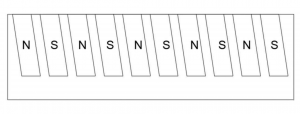The largest application field of rare earth permanent magnets is permanent magnet motors, commonly known as motors.
Motors in a broad sense include motors that convert electrical energy into mechanical energy and generators that convert mechanical energy into electrical energy. Both types of motors rely on the principle of electromagnetic induction or electromagnetic force as their basic principle. The air-gap magnetic field is a prerequisite for the operation of the motor. A motor that generates an air-gap magnetic field through excitation is called an induction motor, while a motor that generates an air-gap magnetic field through permanent magnets is called a permanent magnet motor.
In a permanent magnet motor, the air-gap magnetic field is generated by permanent magnets without the need for additional electrical power or additional windings. Therefore, the biggest advantages of permanent magnet motors over induction motors are high efficiency, energy saving, compact size, and simple structure. Therefore, permanent magnet motors are widely used in various small and micro motors. The figure below shows a simplified operating model of a permanent magnet DC motor. Two permanent magnets generate a magnetic field in the center of the coil. When the coil is energized, it experiences an electromagnetic force (according to the left-hand rule) and rotates. The rotating part in an electric motor is called the rotor, while the stationary part is called the stator. As can be seen from the figure, the permanent magnets belong to the stator, while the coils belong to the rotor.


For rotary motors, when the permanent magnet is the stator, it is typically assembled in configuration #2, where the magnets are attached to the motor housing. When the permanent magnet is the rotor, it is commonly assembled in configuration #1, with the magnets affixed to the rotor core. Alternatively, configurations #3, #4, #5, and #6 involve embedding the magnets into the rotor core, as illustrated in the diagram.
For linear motors, permanent magnets are primarily in the form of squares and parallelograms. Additionally, cylindrical linear motors utilize axially magnetized annular magnets.
The Magnets in Permanent Magnet Motor have the following characteristics:
1. The shape is not too complicated (except for some micro motors, such as VCM motors), mainly in rectangular, trapezoidal, fan-shaped, and bread-shaped forms. Particularly, in the premise of reducing motor design costs, many will use embedded square magnets.
2. Magnetization is relatively simple, mainly single-pole magnetization, and after assembly, it forms a multi-pole magnetic circuit. If it is a complete ring, such as an adhesive neodymium iron boron ring or hot-pressed ring, it usually adopts multi-pole radiation magnetization.
3. The core of the technical requirements mainly lies in high-temperature stability, magnetic flux consistency, and adaptability. Surface-mounted rotor magnets require good adhesive properties, linear motor magnets have higher requirements for salt spray, wind power generator magnets have even stricter requirements for salt spray, and drive motor magnets require excellent high-temperature stability.
4. High, medium, and low-grade magnetic energy products are all used, but coercivity is mostly at a medium to high level. Currently, the commonly used magnet grades for electric vehicle drive motors are mainly high magnetic energy products and high coercivity, such as 45UH, 48UH, 50UH, 42EH, 45EH, etc., and mature diffusion technology is essential.
5. The segmented adhesive laminated magnets have been widely used in high-temperature motor fields. The purpose is to improve the segmentation insulation of the magnets and reduce eddy current losses during motor operation, and some magnets may add epoxy coating on the surface to increase their insulation.
Key testing items for motor magnets:
1. High-temperature stability: Some customers require measuring open-circuit magnetic decay, while others require measuring semi-open-circuit magnetic decay. During motor operation, the magnets need to withstand high temperatures and alternating reverse magnetic fields. Therefore, testing and monitoring of finished product magnetic decay and high-temperature demagnetization curves of the base material are necessary.
2. Magnetic flux consistency: As the source of magnetic fields for motor rotors or stators, if there are inconsistencies in magnetic flux, it can cause motor vibration, and power reduction, and affect the overall function of the motor. Therefore, motor magnets generally have requirements for magnetic flux consistency, some within 5%, some within 3%, or even within 2%. Factors that affect magnetic flux consistency, such as consistency of residual magnetism, tolerance, and chamfer coating, should all be considered.
3. Adaptability: Surface-mounted magnets are mainly in a tile shape. Conventional two-dimensional testing methods for angles and radii may have large errors or be difficult to test. In such cases, adaptability needs to be considered. For closely arranged magnets, cumulative gaps need to be controlled. For magnets with dovetail slots, assembly tightness needs to be considered. It is best to make custom-shaped fixtures according to the user's assembly method to test the adaptability of the magnets.
Post time: Aug-24-2023







